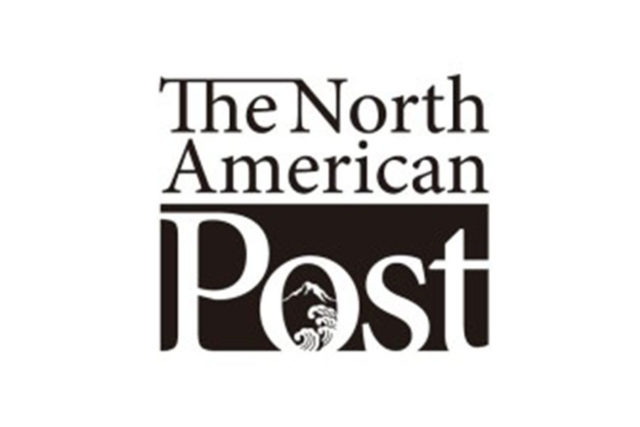By David Yamaguchi, The North American Post
ON A CLOUDY DAY in January, I opened my front door to find a package left by the mail lady. It was an unsolicited book from University of Washington Press. Inside, I found a paperback copy of the new 2018, 365page biography of Seattle-born Nisei writer, John Okada. As “North American Post” was included in the mailing address, apparently the noted publisher of JA titles wanted a review from me in this space.
My first thought was, “Great, I have arrived as a writer whose opinion matters.” The pay is not great, of course (a free book), but as they say, it beats “a poke in the eye.” Moreover, the timing was convenient. At the time, I was drawing a blank about what to pen next in this space. Still there were reasons for hesitating.
I am not a scholar of Japanese American studies. Rather, I am just your typical Sansei on the street.
It has been years since I read “No No Boy” (1957), Mr. Okada’s only book, the widely acknowledged first JA novel. The tale is based on the life of local Nisei Jim Akutsu, who was a WWII draft resister. The title derives from the answers some Nisei provided to the two most divisive written loyalty questions given to residents of the wartime internment camps.
“Are you willing to serve in the armed forces of the United States on combat duty, wherever ordered?
“Will you swear unqualified allegiance to the US… and faithfully defend the US from… attack by foreign and domestic forces, and forswear any form of allegiance or obedience to the Japanese Emperor…?”
Still, the present-day questions that the unopened book before me posed were intriguing. Does it fulfill the promise of sketching out the mystery behind the novel? That is, who was its author as an individual? What was his life like and what did he think about before dying prematurely of a heart attack at age 47? Most importantly, does the new book capture the essence of Mr. Okada’s story, at a time when doing so is still possible, while those who knew him and have his effects are still available to ask?
I recalled only that he had held a day job as a technical writer, and that his grief-stricken wife had destroyed the manuscript for his second, unfinished novel. His lingering words had been too painful to leave around the house.
I began to read.
Immediately striking is how silkily written its opening chapters—by local Frank Abe—are. Here, we meet the young John Okada as the front-row runt in a class photo on the porch of Bailey Gatzert Elementary. We learn that like Monica Sone of “Nisei Daughter,” he was the child of a downtown hoteloperating family.
The pages follow John to the 1941 graduating class of Broadway High (today’s Broadway Performance Hall).
After that we learn that he spent his summers cleaning fish in an Alaska salmon cannery, work done by many Nisei men saving money for college.
We find that that the slimy, laborintensive environment is probably where John learned to smoke.
At the time of Pearl Harbor, John was a UW freshman. By mid-1942 at Camp Harmony, Puyallup, a peer remembers him as “a chain smoker.”
Mid-war, after a year at an inland junior college, Okada—a former student at the Seattle Japanese Language School—volunteers for military service as a linguist. He would later find himself on bombing flights over Japan, scribbling down land-based Japanese radio communications. Postwar, he would participate in the Allied Bombing Survey, assessing A-bomb damage in Hiroshima.
Back in Seattle, Okada began anew at the UW, where creative writing courses figured prominently in his studies. During stints working for the family business, he would converse at length with the son of a neighboring business, Jim Akutsu. These conversations would prove key to the storyline of “No No Boy.” Okada’s own WWII service in military intelligence was off limits as a writing topic owing to a postwar “hush” order.
In this period we also see details of the postwar animosity between the Nisei Vets — many of whose friends died in the war—and the families of resisters. Even the otherwise innocuous Nichiren Buddhist Church asked the Akutsu mother, the parent of two resisters who cleaned their bathrooms on Saturdays, to not attend services anymore.
If Jim Akutsu’s tale formed the central storyline, it was Okada’s taking a new job, as a librarian in Detroit, which proved the catalyst for setting a fictionalized version on paper. The move created the evening social isolation that the newly married working man needed for the task.
In a cover letter to the Japan-focused publisher William Tuttle—other companies would not give Okada the time of day—we see something of his motivations.
“This is a story that has never been told in fiction and only in fiction can the hopes and fears and joys and sorrows of people be adequately recorded.”
While there is much more to tell, the bottom line is that the editors deserve high praise for sleuthing out John Okada’s personal story. Thus, he will not share the same fate as Sei Shoganon, an author introduced today as someone about whom “little is known.”
The new John Okada biography will make a good addition to the libraries of all who seek to develop more than a cursory understanding of Seattle JA history. Like me, such readers will also find joy in being reminded that there really was a time when the Nisei were fresh-faced young kids, whose minds were filled with dreams.






